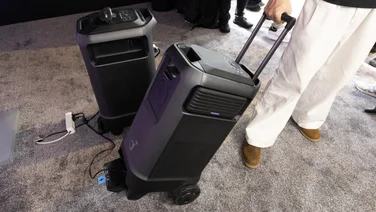To help us provide you with free impartial advice, we may earn a commission if you buy through links on our site. Learn more

Barclays has released three new contactless payment devices, indicating why the bank wasn’t particularly keen to join the rush of banks supporting Apple Pay in the UK. The three new bPay products include a wristband, a keyring fob and sticker designed to go on the back of your smartphone.
The three NFC devices – which will be available from July 1 – will allow bPay customers to make contactless payments of up to £20 at dozens of High Street outlets, including Marks & Spencer, McDonald’s and on the London Underground system.
The bPay wristband is the most expensive of the devices, costing £25. It’s a rather natty looking black and silver strap, that looks similar to the FitBit fitness bands and their ilk. Then comes the £20 keyring fob, which follows the same colour scheme as the wristband. Finally, the sticker will cost £15 and is designed to be affixed to the back of a smartphone. It shouldn’t interfere with any case you might use for your smartphone, although it obviously increases the risk that a lost or stolen smartphone could be used to run up even more expense on your account.
The bPay system isn’t restricted to Barclays banking customers: bPay accounts can be topped up using any major debit or credit card, and you must have credit in your account before you can make a contactless payment. A companion app for iOS or Android smartphones lets you add money to your bPay account or review your payment history.
Barclays was the only major British bank not to support Apple Pay when Apple announced the service was coming to the UK earlier this month. Apple’s contactless payment system allows iPhone/Apple Watch owners to make payments using their devices. Apple’s system will also initially be restricted to a £20 limit, until retailers adopt specific Apple Pay hardware. The full Apple system uses fingerprint recognition to authenticate purchases, making it more secure than regular contactless transactions, which don’t normally require any additional authentication.






